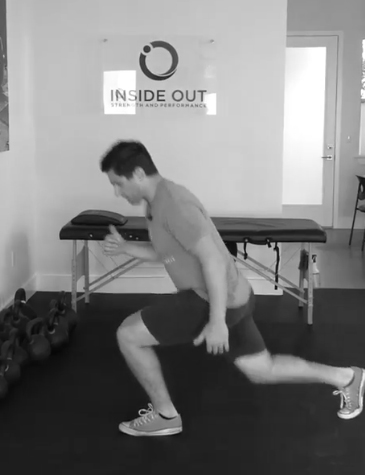Is It Safe For Me To Be Squatting?
We’ve all heard the importance of the squat as it relates to overall strength, health, and fitness. But how do you know you’re ready for squatting and how do you know you have the prerequisite strength and mobility to perform it correctly? While the squat is an amazing exercise for a whole variety of reasons – it can also lead to injury if not done correctly.
We see people in our clinic every day for lower back, hip, and knee issues that can be traced back to their squatting mechanics. And while there is a lot that goes into learning how to do the squat properly, there is also a baseline of mobility and strength required at a minimum to perform this movement safely and effectively. Check out our basic 3 step checklist we’ve put together of the basic needs you must have to start building your squat.
Your 3 Step Squat Prerequisite Checklist
Ankle Mobility
If your ankles aren’t mobile, your squat will suffer. Having good ankle mobility, specifically ankle dorsiflexion (allowing the knee to come forward over the toes), helps improve your squat depth and keep an upright torso. This will allow you to not only move more weight, but it will help protect your knees and lower back in the process.
When we lose ankle mobility, it makes it hard to achieve full depth without seeing common compensations of rolling the knees in, lifting the heels up, or rounding the lower back in the bottom of the squat. All these are going to limit your performance and can lead to overuse injuries in other areas over time.
Check out our video below to see how your ankle mobility stacks up:
View this post on Instagram
Hip Mobility
If your hips aren’t mobile, your lower back and your knees will suffer. Similar to the ankles, you must have full hip flexion and rotation to achieve full squat depth with good form. Missing hip mobility is one of the most common factors we see for those with lower back pain when squatting.
As the hips get tight near the bottom of the squat, the back is forced to round to get full depth. This leads to more stress on the lower back, and less muscle working through our strong glute and thigh muscles. This means less weight, less efficiency, and more stress on the lower back. If you’re looking for ways to improve mobility in this area, check out a previous post we did on 10 Ways to Improve Hip Mobility.
Check out our video below to see how your hip mobility stacks up:
View this post on Instagram
Single-Leg Strength
If you aren’t balanced and strong on one leg, your performance and longevity in the squat will suffer. Too often we only train and strengthen both legs together. While double leg exercises are great for building overall strength, we have to make sure we’re staying balanced from side to side.
We often see people in our clinic with injuries and pain that always seem to happen on one side. This can commonly be traced back to an imbalance right to left through the legs and core. Creating more balance from side to side will not only reduce your likelihood for one-sided overuse injuries, but also allow you to perform better as you strengthen that foundation.
Check out our video below to see how your single-leg strength stacks up:
View this post on Instagram
While this is by no means an exhaustive list, this should give you a very basic roadmap of things to look for to squat safely and effectively. The squat is a complex movement to begin with, so make sure you’re at least passing this 3 Step Squat Prerequisite Checklist before performing metcons or increasing your weight.
The squat can be a beautiful exercise that improves your overall health and fitness, or it can be an exercise that people dread because it causes pain and injury. We see people every single day that have been scared to start or get back into squatting due to pain or a fear of injury. While this is common, this is by no means normal. We help people just like you get back into squatting safely and effectively for years to come. Don’t let a fear of injury or pain hold you back, contact us today to speak with one of our Docs to get back to the activities you love most.

